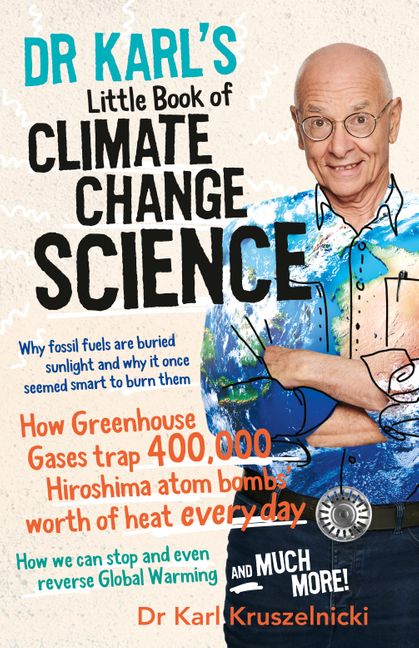Report on Large Loss Claims Dynamics and Sustainable Development Implications
Executive Summary
A recent review by Crawford & Company on large loss claims highlights a shifting risk landscape shaped by climate change, economic volatility, and supply chain disruptions. These dynamics present significant challenges to the insurance sector and directly impact the progress of several United Nations Sustainable Development Goals (SDGs). The report underscores the urgent need for innovation, investment in human capital, and technological adoption to build a resilient claims ecosystem capable of supporting sustainable recovery and development.
Key Findings and Alignment with Sustainable Development Goals
1. Intensifying Climate-Related Disasters and Economic Resilience
The report identifies a significant increase in the frequency and severity of extreme weather events, a trend that directly challenges the objectives of SDG 13: Climate Action. This new baseline for disaster-related losses tests the capacity of traditional insurance models and threatens economic stability.
- Impact on SDG 13 (Climate Action): The rising scale of climate-driven claims demonstrates the tangible financial consequences of climate change, reinforcing the need for urgent climate mitigation and adaptation strategies.
- Impact on SDG 8 (Decent Work and Economic Growth): Prolonged and complex disruptions from these events, particularly in business interruption (BI), undermine economic continuity and the stability required to sustain decent work and economic growth.
2. Obstacles to Sustainable Infrastructure and Community Recovery
The review points to several factors complicating recovery efforts, thereby affecting the development of resilient infrastructure and communities.
- Economic Pressures: Rising inflation and supply chain instability escalate the costs of materials and labor, making reconstruction more expensive and time-consuming. This directly impedes progress on SDG 9: Industry, Innovation and Infrastructure, which calls for building resilient infrastructure.
- Regulatory and Overlapping Events: Enhanced building standards and the challenge of assessing damage from multiple, overlapping loss events in the same region further complicate claims handling. This complexity directly impacts the ability to achieve targets within SDG 11: Sustainable Cities and Communities, specifically those related to reducing economic losses from disasters and ensuring resilient human settlements.
Strategic Responses and Technological Innovation for the Goals
1. Leveraging Innovation for Resilient Infrastructure (SDG 9)
Crawford & Company is responding to the complex loss environment by investing in advanced technologies. This strategic focus on innovation is critical for achieving the targets of SDG 9.
- Advanced Assessment Tools: The integration of catastrophe models, satellite imagery, real-time weather data, and AI-powered solutions enhances the accuracy and timeliness of loss assessments.
- Enhanced Capabilities: These technologies empower adjusters to better differentiate between initial and subsequent damage, leading to more efficient and effective recovery processes that support the rebuilding of resilient infrastructure.
2. Investing in Human Capital and Partnerships (SDG 4, SDG 8, and SDG 17)
The report emphasizes a dual approach of investing in both technology and people, which aligns with multiple SDGs.
- Developing Skilled Professionals: Initiatives to attract and train the next generation of claims professionals support SDG 4 (Quality Education) by providing relevant vocational skills and SDG 8 (Decent Work and Economic Growth) by creating a skilled workforce.
- Building a Purpose-Driven Ecosystem: As stated by President and CEO Rohit Verma, the industry must think “far beyond traditional approaches.” This calls for a collaborative, tech-enabled, and purpose-driven claims ecosystem, reflecting the spirit of SDG 17: Partnerships for the Goals, to collectively address the rapidly changing loss backdrop and support global resilience.
Analysis of Sustainable Development Goals in the Article
1. Which SDGs are addressed or connected to the issues highlighted in the article?
- SDG 9: Industry, Innovation and Infrastructure: The article heavily emphasizes the need for innovation within the insurance sector to handle complex claims. It discusses investment in advanced technologies like AI, satellite imagery, and catastrophe models, as well as the need for a more responsive and tech-enabled claims ecosystem to cope with challenges like supply chain instability.
- SDG 11: Sustainable Cities and Communities: The core of the article revolves around managing the aftermath of disasters, particularly the economic losses from extreme weather events affecting communities. It discusses the rising costs of reconstruction and business interruption, which directly impact the resilience and recovery of human settlements.
- SDG 13: Climate Action: The article explicitly links the “continued increase in the frequency and scale of extreme weather events” to “long-term climate patterns.” This creates a “new baseline for disaster-related losses,” making climate action, specifically adaptation and resilience to climate-related hazards, a central theme.
- SDG 8: Decent Work and Economic Growth: The article touches upon economic factors like rising inflation, the cost of materials and skilled labor, and business interruption. It also highlights the need to invest in “people” and train the “next generation of claims professionals,” which relates to developing a skilled workforce to maintain economic productivity in the face of growing challenges.
2. What specific targets under those SDGs can be identified based on the article’s content?
- Target 13.1: Strengthen resilience and adaptive capacity to climate-related hazards and natural disasters in all countries. The article’s main focus is on the insurance industry’s need to adapt to the increased frequency and scale of extreme weather events, which are described as creating a “new baseline for disaster-related losses” and “testing the capacity of traditional response models.”
- Target 11.5: By 2030, significantly reduce the number of deaths and the number of people affected and substantially decrease the direct economic losses relative to global gross domestic product caused by disasters. The report is a “Large Loss Claims Review” that quantifies and analyzes the rising financial impact (“higher claim costs,” “disaster-related losses”) of these events.
- Target 9.5: Enhance scientific research, upgrade the technological capabilities of industrial sectors in all countries, in particular developing countries, including, by 2030, encouraging innovation. The article details Crawford’s response to the challenges, which includes “combining advanced technologies—such as catastrophe models, satellite imagery, and real-time weather data” and investing in “AI-powered solutions.”
- Target 9.1: Develop quality, reliable, sustainable and resilient infrastructure, including regional and transborder infrastructure, to support economic development and human well-being. The article points to “supply chain instability” and “interconnected supply chains” as major issues that complicate recovery and increase business interruption, highlighting the vulnerability of existing infrastructure.
- Target 8.2: Achieve higher levels of economic productivity through diversification, technological upgrading and innovation. The call to move “far beyond traditional approaches” and use “innovative tools” to empower claims professionals is a direct call to increase the productivity and effectiveness of the claims management industry.
3. Are there any indicators mentioned or implied in the article that can be used to measure progress towards the identified targets?
- Frequency and scale of extreme weather events: This is a direct measure of the climate-related hazards mentioned in the article and is relevant to Target 13.1.
- Volume and cost of disaster-related losses/claims: The article is centered on “Large Loss Claims” and “higher claim costs,” which are direct indicators for measuring the economic impact of disasters as per Target 11.5.
- Cost of materials and skilled labour: The article mentions “escalating prices of materials and skilled labour” as a driver of higher claim costs. This can serve as an indicator for economic vulnerability and the efficiency of reconstruction efforts (related to Target 11.5 and 9.1).
- Incidence and impact of business interruption (BI): The article notes that “31% of businesses identifying BI as a leading concern in 2025.” This percentage is a specific indicator of economic vulnerability and supply chain resilience (related to Target 9.1).
- Investment in technology and innovation: The article implies this indicator through its mention of “ongoing investment in AI-powered solutions” and the adoption of “catastrophe models, satellite imagery, and real-time weather data” to improve claims handling, which measures progress towards Target 9.5.
- Investment in training and workforce development: The mention of “initiatives to attract and train the next generation of claims professionals” is an indicator of building human capital to improve industry productivity and adaptability, relevant to Target 8.2.
4. Summary Table of SDGs, Targets, and Indicators
| SDGs | Targets | Indicators |
|---|---|---|
| SDG 13: Climate Action | 13.1: Strengthen resilience and adaptive capacity to climate-related hazards and natural disasters. |
|
| SDG 11: Sustainable Cities and Communities | 11.5: Substantially decrease the direct economic losses caused by disasters. |
|
| SDG 9: Industry, Innovation and Infrastructure |
9.1: Develop quality, reliable, sustainable and resilient infrastructure.
9.5: Enhance scientific research and upgrade technological capabilities. |
|
| SDG 8: Decent Work and Economic Growth | 8.2: Achieve higher levels of economic productivity through technological upgrading and innovation. |
|
Source: reinsurancene.ws






